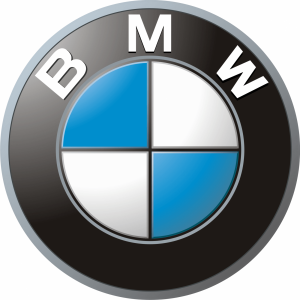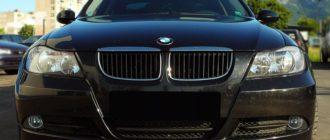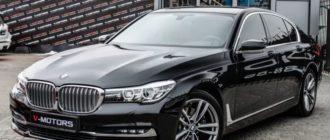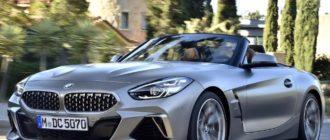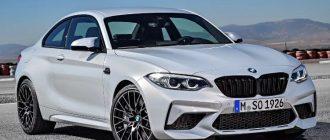**Mini Cooper** — well-known small cars from BMW. Overall **MINI** as an independent automotive brand of the original car appeared in the UK in 1959, but 35 years later it was absorbed by the «Bavarian motor builders» (BMW).
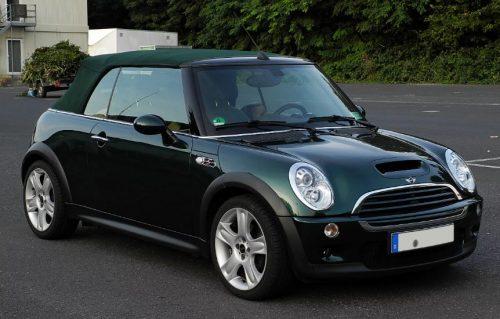
This «small car» is the result of inspiration from the British Motor Corporation (BMC, transformed into British Motor Corporation Leyland in 1968, and in 1975 renamed Rover Group, ceasing to exist in 2000), which with small innovations and changes delighted all its fans until the end of the 20th century with cars from the Mini-Minor Morris, Austin Mini, Countryman, Moke, 1275GT, and Clubman series.
In the 21st century, Chief Designer Frank Stephenson, significantly transforming the image and «filling» of the Mini brand (he himself called it the «evolution of the original»), laid the foundation for a range of well-known series such as the 3-door hatchback Hatch, the Clubman estate, the 5-door Countryman crossover, the 3-door Paceman crossover, Coupe, Roadster, and Convertible cabriolet.
The BMW Group, the owner of the MINI brand, which is spelled exactly like that, happily directed the cars of this brand to participate in races, including rallies.
**Mini Cooper from 1959 to 1990**
The 2-door Mini of original design was produced until the departure from the «arena» of the parent company — Rover Group. In the 1960s, it was a kind of style icon for MINI. Compact and nimble, it was designed specifically for BMC by Sir Alec Issigonis.
The updates led to the release of versions such as the Mark 2 Mini, Clubman, and Mark 3 (initially produced as the Austin 7 and Morris Mini Minor). They freely ranged from estate to van or from pickup to off-roader. The sports branch of Mini was also not left behind. Mini Moke, Mini Cooper, and Mini Cooper S were often used as rally cars.
Mini Cooper appeared on the world market in 1961. It was created by Formula 1 designer John Cooper and engineer-designer Alec Issigonis.
**From 1990 to 2000**
In the early 1990s, Rover Group, already owned by BMW, expanding the range of its products, presented to the public at the 1997 race the 2-door coupe ACV30 — an anniversary concept car to mark three decades since the victory in the Monte Carlo Rally '64. In 1998, the Bavarian motor builders chose a special design, on which American Frank Stephenson worked thoroughly. He developed the new Mini One R50 and Mini Cooper.
**Development of Mini Cooper from 2000 onwards**
Optimizing its financial situation, BMW sold Rover Group to Ford Motor Company, retaining the MINI brand and creating a subsidiary under it. The last of the «old» Minis, Mark 7, left. Its 5,387,862 units, which rolled off the assembly line in the last year of the 20th century, went straight to the corresponding museum, where the premier model of Mini was kept. This event marked the beginning of a new era for the MINI brand — the MINI Hatch.
New Mini cars were released in 2001 but only actively sold in the second half of the «noughties» of the new century, including the impractical for everyday life and with a sporty suspension Mini Cooper.
It was clearly designed for one or two people, as there is very little space in the boot and rear seats. And although in terms of operating costs it is roughly equal to a regular BMW — this is a car for the «soul». The more practical Mini Cooper S 2000 was produced in various versions:
— 3-door and 5-door hatchback.
— Coupe and estate.
— Roadster and convertible.
Equipped with a 1.6-liter inline front-wheel-drive petrol engine with 184 hp, a 6-speed manual or automatic transmission, the Mini Cooper S 2000 accelerated to 205 km/h in 8 seconds. However, it clearly lagged behind in these parameters from the Mini John Cooper Works 2.0 AT (a 2-liter inline petrol engine with 231 hp), even in its «charged» TwinPower S version with a 2-liter and 192 hp engine, respectively by 1.9 and 0.7 seconds, as well as by 41 and 9 km/h.
The second restyling generation of this car was released in 2010.
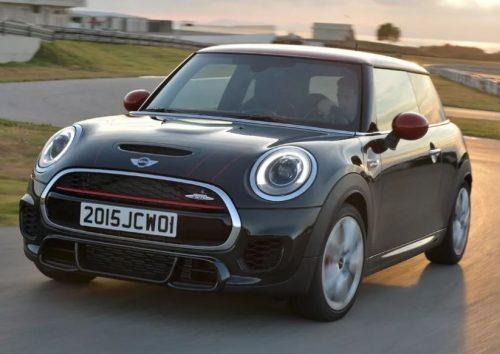
In 2011, BMW, along with serious financial investments in the MINI brand (£0.5 billion), announced the release of two new 2-door crossover sports cars based on the Mini Paceman, and in 2017, the launch of an electric car series at the Cowley plant (Oxford, UK).
**Development and production of Mini Cooper models**
Before being acquired by the Bavarian motor builders, MINI was produced only in England at the following plants:
— In Cowley (Oxford). Built on the site of the old plant, erected back in 1913. The first car, Bullnose Morris Oxford, was produced here, and a total of more than 11 million cars were produced, including 2.25 million MINIs. Over 4,000 people and 400 robots work at the assembly plant.
— In Swindon (Wiltshire county), they make bodies and body parts for MINI.
— Production of the «old» MINI was completed in Longbridge (Birmingham), so it is still called the «mini family home,» and now engines are produced there.
Countryman broke the rule that a hundred cars of this brand are produced only in Shakespeare's homeland because in the competition for its production, the enterprise in Graz (Austria) owned by Magna Steyr AG & Co KG won.
In 2020, BMW announced the possibility of ceasing the production of Mini in England in case of its exit from the European Union (Brexit without a deal).
Read more: BMW 5-Series Review and Specifications
**Sales**
A total of over 5 million MINI cars have been sold, allowing this brand to become the most massive among English cars of all time. In 2009, it became the 7th in terms of sales of any car brands in the UK, breaking into the top ten most demanded cars in its own country.
In 2018, according to the results of 9 months, Lada, entering the TOP-50 leaders of global sales for the first time and taking 48th place (286 thousand cars), pushed Mini to 50th place with indicators of 266.5 thousand cars sold (a total of 324.9 thousand cars were sold in a year).
According to European data from AEB, in the 21st century, the sales threshold of 100 thousand units per year was overcome in 2005 (102.2 thousand units), and a year later, 214.0 thousand MINIs were sold. In 2011, the quarter-million mark was reached (262.5 thousand units), with 53% produced in the Cooper version and 26.2% in the Cooper S version.
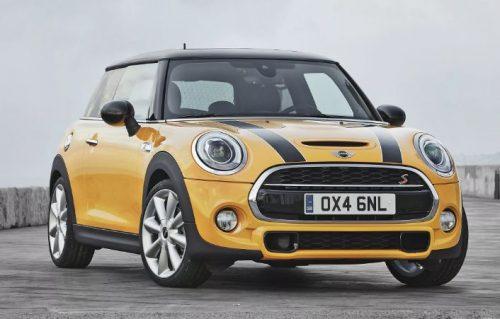
Another record was set in 2015 and 2018 when sales exceeded 300 thousand units per year (302.0 thousand units) and reached a historical maximum (324.9 thousand units). In 2019, there is a 12.3% drop in sales to 285.0 thousand units per year.
**Marketing**
To promote the sales of old MINI cars, the victories of Mini Cooper S in the Monte Carlo Rally and both excellent films «The Italian Job» played a huge role, with Mini Cooper (1969) and the updated MINI (2003) almost becoming the main inanimate characters.
Other marketing and advertising steps then played a supporting role, although to conquer the huge car market in the USA, the MINI advertising agency applied the latest strategy for North American residents, presenting Mini Cooper as a «rebel» in billboards and spreads in popular magazines, not following the common rules, which was very well received and solidified this effect with statements about MINI from very famous endorsers. The internet and social networks were involved.
In 2012, most of the unobtrusive native advertising was already going through internet sites and social networks, and by 2014, the number of such ads, mentions, and opinions exceeded 1.3 million, which brought the brand to the top of «natural marketing» and significantly increased sales.
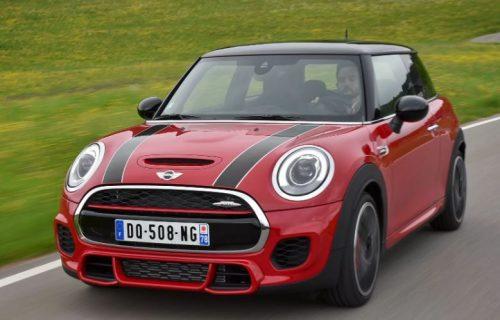
However, the highest point, so to speak, the anthem of the MINI brand in the field of the internet became a real company when all possible parameters of the car were transmitted by the customer via the internet, and in real-time, he could observe the assembly of his car, and individual photos were formed into a photo album and presented to the owner after purchasing the car.
The Bavarian motor builders also bet on low-budget but incredibly effective «guerrilla» advertising. For example, toy car boxes appeared in the town dump, on which the Mini Cooper, supposedly could be placed under the Christmas tree as a gift, or in advertising shots, the car appeared with a tiny UFO on the roof.
**Motorsport**
It has already been noted that special sports Mini Cooper and Mini Cooper S have repeatedly raced on special tracks, including rallying. Special luck accompanied them in the mid-1960s in Monte Carlo.
The currently closed small racing series R56 Challenge participated in the Mini Challenge-2008, and in the WRC Rally-2011, a modified car from the Prodrive Mini Countryman WRC participated.
